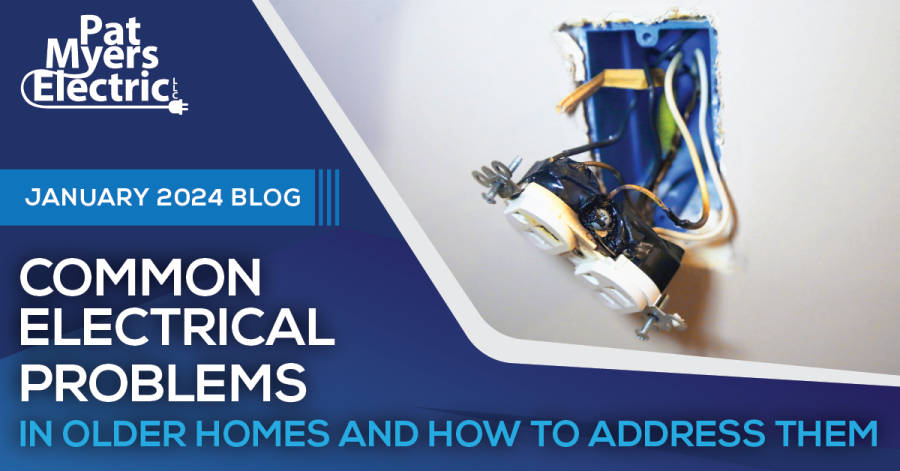Everything old is new again! We are seeing an explosion of things and styles that used to be trendy pop up all over again. We see it everywhere in clothing style, but did you know that it is happening with houses too? Fixer-up homes with classic craftsmanship qualities or unique architectural designs are the homes to buy! We are all about that style! Old homes do have some things to consider when purchasing. They may not be up to electrical code, may have outdated and worn down systems, and may not have the ability to power modern electronics and appliances. That’s definitely not move-in ready! Here are some of the most common electrical issues in old homes and what you need to know.
What to watch out for
Old homes were not built to modern standards. Not only does this mean that older homes do not meet modern electrical codes, but they may not even be able to run standard appliances. There are also plenty of minor issues that can arise over time.
Outlets do not work.
Did you know that most standard electrical outlets only last about 15 to 25 years? As a homeowner, you rarely, if ever think about that. It can just be inconvenient, but in some parts of your home, it’s necessary to have working outlets. Fixing this could be a quick trip to the store to get a new outlet, but if the wiring is damaged, it is smart to let a professional electrician handle the job.
Not enough power.
Outdated electrical systems are one of the most common issues you will encounter if you have an older home that has not been updated. Older homes often have insufficient systems to power all of the appliances of a modern household. Unfortunately, there is no easy way to fix this. You will need to restructure or replace the existing electrical system to update it.
Old Wiring.
A standard electrical system will usually have wires that will last for decades. Decades are longer than most of us will ever remember to check it. If you own an older home, it may be well past time to examine your wiring. Damaged or exposed wiring can cause electrical issues, but more importantly, they can be dangerous, and potentially be a risk for electrical fires. New wiring is a fix for professional electricians as it is usually difficult and dangerous for a DIY task.
Pro tip! It is important to check for the presence of “cloth” wiring or “knob and tube” wiring. Many insurance carriers will no longer issue policies to insure homes with these wiring methods. Many home buyers and sellers will need to replace recalled electrical panel brands prior to getting a new insurance policy issued. Have your local electrician and home inspector work together to make sure the panel and wiring in place are not likely to be flagged by insurance. It will save you from an unpleasant surprise!
An old home with modern convenience
An older home may take work to get it up to modern standards and convenience, but we know it is worth it. There are a lot of jobs for professionals to handle and plenty of opportunities for DIY. You may come to access more electrical issues in an older home than what we covered here or during an electrical safety inspection. You may find new issues that need to be addressed. Don’t worry! The Pat Myers Electric team has you covered. Contact us today and we can walk you through a complete electrical safety inspection of your home and help you understand what needs immediate attention and what is not an issue.




